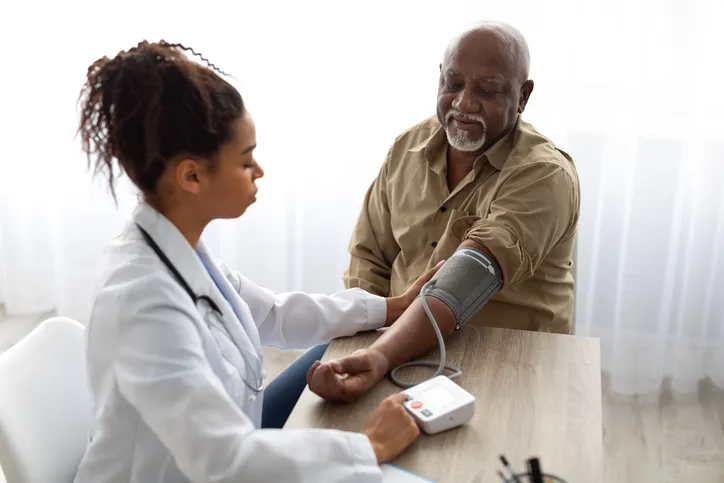Black Amputation Rates Are High. Knowing Your Risk Can Lower It.
Share
Explore Our Galleries
Breaking News!
Today's news and culture by Black and other reporters in the Black and mainstream media.
Ways to Support ABHM?
By Jennifer Porter Gore, Word in Black
Everyone knows diabetes, high blood pressure and smoking are health hazards, but few know they could lead to peripheral artery disease.

It’s a common cardiovascular disease that leads to some 400 amputations performed each day in the United States. It is a serious medical condition, prevalent in the Black community, that can also lead to stroke, heart attacks and, in some cases, death.
Yet a recent survey has found that while millions of Americans have cardiovascular disease or diabetes, very few are aware of peripheral artery disease, and even fewer have ever had a discussion about it with a medical professional.
PAD causes blockage in the vessels that carry blood from the heart to the legs and affects more than 12 million Americans. Leading risk factors for PAD are the common chronic health conditions that disproportionately impact underserved communities.
“These new insights are particularly concerning among those most at risk and come at a time when a staggering 1 in 20 Americans over 50 years of age experience PAD,” said Dr. George D. Dangas, president of the Society for Cardiovascular Angiography & Interventions, and a professor at the Mount Sinai School of Medicine in New York City.
Learn what else the modern Black community is facing in this virtual exhibit gallery.
Find more Breaking News here.









Comments Are Welcome
Note: We moderate submissions in order to create a space for meaningful dialogue, a space where museum visitors – adults and youth –– can exchange informed, thoughtful, and relevant comments that add value to our exhibits.
Racial slurs, personal attacks, obscenity, profanity, and SHOUTING do not meet the above standard. Such comments are posted in the exhibit Hateful Speech. Commercial promotions, impersonations, and incoherent comments likewise fail to meet our goals, so will not be posted. Submissions longer than 120 words will be shortened.
See our full Comments Policy here.